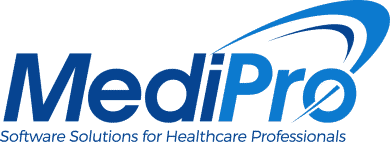Nowadays, everybody wants to make its own future, running business in order to provide them with good earnings and the great satisfaction of doing something constructive. Working in different fields, people are developing the market, working hard in order to defeat their competitors. But, to do things right for the business to work properly, the accounting and billing system need to be strictly organized. Otherwise, a total disorganization occurs, causing money damage and the lost of a great amount of precious client data. In order to avoid this situation, billing software has been developed to help you best organize your accounting and billing system and run a clean and systematic business.
But how do you find the proper billing software that best fits your business? Well, by finding some billing software guides to help you find the perfect billing software. This system practically helps you keep track of customers and also generates statements, invoices, and other business documents.
There is a wide variety of billing software, specially designed for every kind of business. You can get a billing software as general or specialized as you need. There are two broad classes of billing software: the consolidation systems and the real- time systems. The consolidation systems gather billing events from several systems and merge the billing events to create a single invoice with all the charges. In order to mark the cut off date and time for charges, these systems often have one or more billing periods. On the other hand, the real-time systems decrement a balance as billing events occur. So, practically, when the customer’s balance reaches a threshold, the billing system may terminate the customer’s ability to use the service. These systems are frequently used for prepaid or time-based services.
Billing software provide with flexible billing systems that can manage a variety of recurring and non-recurring charges. Recurring charges are fees paid over the length of a term period which often applies to ongoing services. These systems are practically parts of subscriptions that may include one-time setups costs and renewal costs at the end of the term length. While this type of charges implies fees paid over the period the services are provided, the non-recurring charges are one time fees paid which often apply to the delivery products or services. On addition, each one of these charges may have associate taxes which are based on the tax zone of the customer and the originating point of service. They are also based on the tax zone of the service provider. It is also good to know, that a billing software may involve credits and adjustments. As the result of a promotion, a billing adjustment may be initiated by a customer or applied automatically.
There are billing software that has special features designed to accommodate the needs for different kinds of business projects. For example, people working in the medical field opt for the medical billing software. The design of the medical billing software allows it to accommodate the needs of a thriving medical practice, including a place to enter patient insurance information. There is even automotive billing software that is designed to meet the needs of an auto body shop.
So, practically you have to choose generalized billing software that has the proper functions for the business you own.
But how do you find the proper billing software that best fits your business? Well, by finding some billing software guides to help you find the perfect billing software. This system practically helps you keep track of customers and also generates statements, invoices, and other business documents.
There is a wide variety of billing software, specially designed for every kind of business. You can get a billing software as general or specialized as you need. There are two broad classes of billing software: the consolidation systems and the real- time systems. The consolidation systems gather billing events from several systems and merge the billing events to create a single invoice with all the charges. In order to mark the cut off date and time for charges, these systems often have one or more billing periods. On the other hand, the real-time systems decrement a balance as billing events occur. So, practically, when the customer’s balance reaches a threshold, the billing system may terminate the customer’s ability to use the service. These systems are frequently used for prepaid or time-based services.
Billing software provide with flexible billing systems that can manage a variety of recurring and non-recurring charges. Recurring charges are fees paid over the length of a term period which often applies to ongoing services. These systems are practically parts of subscriptions that may include one-time setups costs and renewal costs at the end of the term length. While this type of charges implies fees paid over the period the services are provided, the non-recurring charges are one time fees paid which often apply to the delivery products or services. On addition, each one of these charges may have associate taxes which are based on the tax zone of the customer and the originating point of service. They are also based on the tax zone of the service provider. It is also good to know, that a billing software may involve credits and adjustments. As the result of a promotion, a billing adjustment may be initiated by a customer or applied automatically.
There are billing software that has special features designed to accommodate the needs for different kinds of business projects. For example, people working in the medical field opt for the medical billing software. The design of the medical billing software allows it to accommodate the needs of a thriving medical practice, including a place to enter patient insurance information. There is even automotive billing software that is designed to meet the needs of an auto body shop.
So, practically you have to choose generalized billing software that has the proper functions for the business you own.
